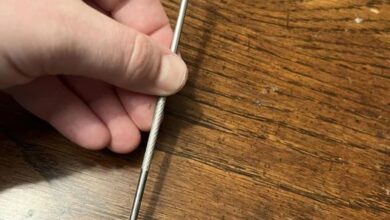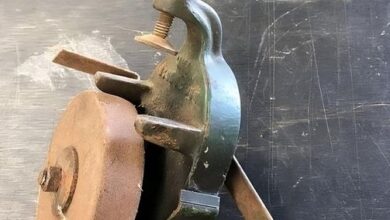The Evolution of Playgrounds: From Hot Metal Slides to Safety-First Designs

ADVERTISEMENT
The Evolution of Playgrounds: From Hot Metal Slides to Safety-First Designs
Introduction:
Once upon a time, playgrounds were simple, straightforward, and—by today’s standards—harsh. The structures were often made of hot metal, with minimal padding, placed above hard-packed dirt or grass. Slides without side railings, towering jungle gyms, and merry-go-rounds that could spin at terrifying speeds were the norm. For many, these minimalist playgrounds, devoid of modern safety features, are a nostalgic reminder of a “tougher” era. Today, playgrounds are meticulously designed to ensure children’s safety and comfort, representing a shift in societal values and our understanding of child development.
The Old-School Playground Experience:
ADVERTISEMENT
In past decades, playgrounds were characterized by:
- Metal Slides and Equipment:
- Slides were typically made of polished metal, often exposed to direct sunlight, which turned them into virtual stovetops. There were no plastic slides, and children quickly learned to navigate the heat.
- No Soft Landing Zones:
- Rather than mulch, rubber, or foam padding, these playgrounds were often set up over dirt, grass, or concrete. Falls were simply part of the experience.
- Lack of Safety Railings:
- Climbing structures and slides frequently lacked the side railings and guardrails seen today, requiring children to exercise balance and caution.
- The “Survival” Aspect:
- This environment required kids to be vigilant, to learn from minor bumps and scrapes, and to develop a natural sense of caution and resilience.
While these playgrounds may sound dangerous by today’s standards, many who grew up with them recall them fondly, feeling that they taught valuable lessons about risk and resilience.
Why Playground Designs Changed:
As society began to prioritize child safety and psychology, research revealed that falls from playground equipment were a significant source of childhood injuries. Studies showed that safer playground designs could reduce the risk of serious injuries and encourage children to explore freely without constant fear. By the 1980s and 1990s, playground design standards began to reflect these insights. Today’s playgrounds are shaped by guidelines established by organizations like the Consumer Product Safety Commission (CPSC) and the American Society for Testing and Materials (ASTM).
Modern Playground Features:
ADVERTISEMENT
Today’s playgrounds are far removed from the “tough” generation’s play areas. Some notable changes include:
- Non-Heat-Absorbing Materials:
- Plastic, rubber, and coated metals are now commonly used to prevent surfaces from becoming dangerously hot in the sun.
- Safety Surfacing
- : Playground surfaces today include rubber mats, artificial turf, and mulch made from recycled materials, designed to cushion falls.
- Rounded Edges and Barriers:
- Slides, swings, and climbing structures come with rounded edges, railings, and guard barriers, reducing the chance of falls and injuries.
- Inclusive and Accessible Equipment:
- Modern playgrounds often feature inclusive designs, including wheelchair ramps, sensory-friendly equipment, and areas for children of different abilities to play together.
Balancing Safety with Adventure:
While safety is paramount, some critics argue that today’s playgrounds are “too safe,” potentially limiting children’s ability to experience minor risks that teach resilience. There’s a growing movement advocating for “adventure playgrounds,” where children can engage in supervised, low-risk play activities that allow them to explore and test boundaries, similar to the older playground experience but with updated safety oversight.
Conclusion:
The journey from the “hot metal slide” era to the safety-focused playgrounds of today reflects a broader evolution in parenting, societal expectations, and understanding of child psychology. While today’s playgrounds emphasize safety, they aim to create environments where children can still explore, grow, and learn. The shift highlights our dedication to nurturing childhood experiences in ways that are safe yet enriching, ensuring that the next generation is not only “tough” but also well-rounded and prepared for the world.
ADVERTISEMENT
In the end, whether you grew up on a scorching metal slide over hard dirt or a cushioned plastic one, playgrounds remain a cherished space where memories are made, challenges are faced, and friendships are forged.



